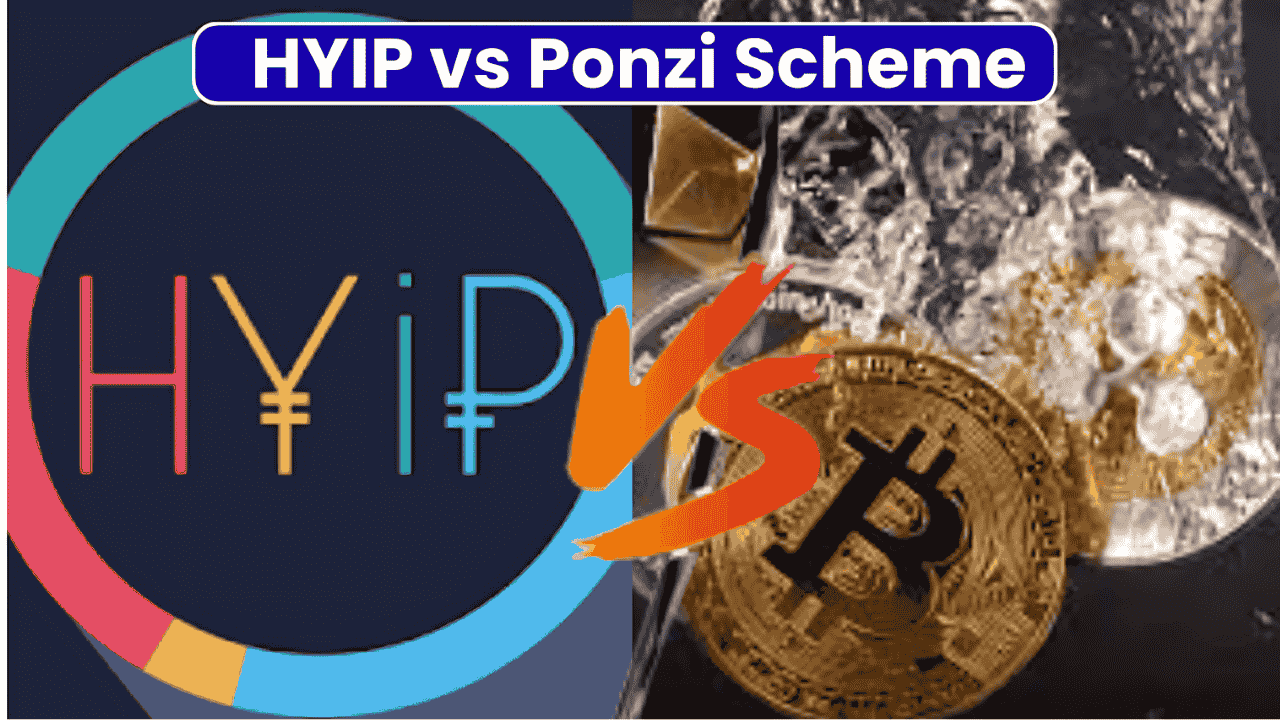HYIP vs Ponzi Scheme: Key Differences and Investor Risks : High-Yield Investment Programs (HYIPs) and Ponzi schemes are two types of investment opportunities that promise unusually high returns. While they may sound similar at first glance, understanding the differences is crucial for protecting your money and making informed financial decisions. Investors need to recognize the signs of each to avoid falling victim to potential scams.
HYIPs often advertise exceptionally high returns through online platforms, whereas Ponzi schemes rely on using funds from new investors to pay earlier participants. Both involve substantial risk, but the underlying mechanics, legality, and sustainability of returns differ significantly. This article explores the distinctions, warning signs, and safer alternatives for potential investors.
Understanding HYIPs and Ponzi Schemes
HYIPs are investment programs that claim to offer unusually high returns on investment, often through internet-based platforms. They typically involve pooling money from multiple investors and promising consistent payouts. However, many HYIPs are unregulated and may collapse when new investments stop flowing.
Ponzi schemes, named after Charles Ponzi, operate by paying existing investors with the capital of new participants. Unlike legitimate investments, they do not generate real profits from business activities. This makes them inherently unsustainable and illegal in most jurisdictions.
Key Differences Between HYIP and Ponzi Scheme
| Feature | HYIP | Ponzi Scheme |
|---|---|---|
| Return Promises | High returns advertised, often unrealistic | High returns funded by new investor money |
| Investment Model | Claims to invest in various assets | No real investment; relies on new contributions |
| Duration | May run for months to a few years | Unsustainable and collapses quickly |
| Regulation | Often unregulated | Illegal in most countries |
| Transparency | Limited information about operations | No transparency; financial records hidden |
| Risk Level | Very high | Extremely high |
| Sustainability | Depends on continuous new investment | Unsustainable; always destined to fail |
How HYIPs Operate
HYIPs usually operate online and attract investors through social media, forums, and advertising. They promise daily or weekly returns that are far above market averages. Many of these programs use referrals to attract more participants, resembling multi-level marketing structures.
Bullet Points:
- HYIPs often provide fake testimonials and fabricated investment reports.
- They may appear legitimate initially but lack verifiable investment activity.
How Ponzi Schemes Work
Ponzi schemes focus entirely on paying returns to earlier investors using the capital of newer investors. They do not create real wealth through business operations. When the flow of new investors slows down, the scheme collapses, leaving most participants with significant losses.
Ponzi operators often maintain an illusion of profitability through fabricated account statements and consistent payouts initially, tricking investors into reinvesting.
Warning Signs to Watch For
Both HYIPs and Ponzi schemes share common warning signs, including promises of guaranteed returns, high referral incentives, and lack of transparency. Investors should be cautious of opportunities that seem “too good to be true” and verify the legitimacy of platforms before committing funds.
Bullet Points:
- Unrealistic returns far exceeding standard market rates.
- Pressure to reinvest profits or recruit new participants.
Risks Involved
Investing in either HYIPs or Ponzi schemes carries substantial financial risk. Investors may lose their entire capital, and recovery of funds is usually impossible once the platform collapses. Legal consequences may also arise for those involved in promoting or facilitating these schemes.
Safer Alternatives
Legitimate investment options such as mutual funds, ETFs, and government bonds provide moderate but sustainable returns. Diversification, professional guidance, and thorough research are essential to avoid fraudulent schemes while building long-term wealth.
FAQs About HYIPs and Ponzi Schemes
Investors often have several questions regarding high-return schemes. Below are common queries answered concisely to help understand the risks.
Q: Can HYIPs ever be legitimate?
ANS: While rare, some HYIPs claim to operate legally, but most are unregulated and carry high risk. Extreme caution is advised.
Q: How to identify a Ponzi scheme?
ANS: Look for guaranteed high returns, lack of transparency, reliance on new investors, and pressure to recruit others.
Q: Is it possible to recover money lost in these schemes?
ANS: Recovery is usually very difficult. Legal action may help in some cases, but most investors lose a significant portion of their capital.
Conclusion
HYIPs and Ponzi schemes are high-risk investment models that promise unrealistic returns. Understanding their differences, recognizing red flags, and seeking safer investment alternatives is crucial for financial security. Always conduct thorough research and opt for regulated, transparent investment opportunities to avoid falling victim to scams.
Disclaimer: Investments in financial markets involve risks, including possible loss of principal. Always do your own research or consult a financial advisor before making any investment decisions.

